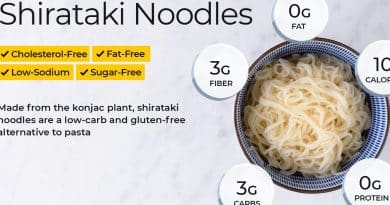The 4 Best Woks for Stir Frying at Home
Wok FAQs
Su-Jit Lin/Insider
What kind of material should I consider?
Carbon steel is a traditional favorite for making woks, while cast iron and stainless steel are great for casual cooks. Here are the strengths and weaknesses of each material:
Carbon steel is traditionally a favorite material for woks because it reacts quickly to heat adjustments and has a natural nonstick surface once seasoned. But be warned: it takes a lot of heavy, repeated usage to get to this level, which is why it’s not recommended for the casual home cook, and why we did not include any carbon steel woks in this test. We are looking forward to testing some pre-seasoned carbon steel woks for the next update
Cast iron is a bit more accessible as people are more accustomed to maintaining it, but it’s important to bear in mind that it’s a very heavy material and will limit your maneuverability.
Stainless steel has been growing in Western popularity since it’s durable and not prone to rust.
Aluminum woks are lighter and hotter but prone to warp and ding.
Hard anodized and nonstick pans provide greater ease of use in a familiar medium, but their performance will vary based on manufacturer-determined specs, like thickness and finish.
What’s the difference between a long- and loop-handled wok?
A loop-handled, or Canton wok, is meant for tumble cooking, which means using a scoop and spatula to quickly agitate ingredients (like fried rice) and spark faster liquid evaporation and spot charring. Loop handled woks are also great for pan-frying, which requires constant contact with the heat source; steaming; and big batch cooking, as they traditionally tend to be wider than long-handled woks.
Long-handled or stick-handled woks are meant for toss cooking, such as with saucy dishes and stir-fries that incorporate larger-cut ingredients. In this technique, you lift the wok off the burner and toss the ingredients into the air using a shake of your wrist. Traditional long-handled woks offer a deeper basin in the middle for thickening sauces and higher walls, and are lightweight for maneuverability in order to flip and toss off the burner.
Should I choose a flat- or round-bottomed wok?
Flat-bottomed woks are better suited for home use because round-bottomed woks require a wok ring.
Round-bottomed woks require the use of a wok ring, which is a metal band that holds the cookware in place on a gas stove burner and directs the heat to and around the wok. This workaround is really only suited for gas stoves, as they can slide off electric and glass-top burners.
Flat-bottomed woks are the most common consumer-available designs, but their dimensions vary tremendously, which is part of why product tests like this are necessary. Not only are results dependent on material, which affects weight and maneuverability, but also by wok floor dimensions, wall height, and curvature. The latter two are perhaps the most important things to consider when you’re trying to recreate effective, authentic wok cooking at home. All the woks used for this test were flat-bottomed.
Is it better to get a more or less curved wok?
“A high curvature results in a broader base for maximum area of heat transfer,” Wang says. That means one with a greater curve and higher walls means heat is less concentrated on the flat bottom and better distributed up the walls. However, an overly steep wok can trap steam and make your food get limp and soggy.
But a flatter, lower wok has disadvantages of its own. You simply can’t mix well with a broad wok floor, and you definitely can’t toss. And while tumbling (as opposed to stirring) is the right way to work food in a wok, you don’t want to throw ingredients out of it. Curved walls help cue flipping your ingredients back into the pan, and taller sides keep errant pieces from escaping.
The bottom line is that proportion is critical to creating the varying heat zones needed, since stir-fry components usually cook and brown at different rates. Even layering your ingredients can’t save you from over- or undercooking if the temperature is too uniform.
What’s the best way to season a wok?
Unless you’re getting a carbon steel wok (which we did not test), you would season a wok the way you would any pan of the same material. However, most nonstick woks are ready to go right out of the box.
These detailed instructions on how to season cast iron woks will help you get that material prepped for duty.
If you do decide to go rogue off our recommendations and opt for traditional carbon steel, Wang emphasizes the importance of prepping it properly. “There’s a systematic process where the wok adapts a nonstick nature that comes with repeated oil washing,” developing a blackened patina from oil that’s seared on in a hard coat, like with cast iron. However, this takes a lot of use and tremendous heat exposure to develop.
What tools do I need to cook with a wok?
A chuan is may look like a spatula at first glance, but there’s a curvature that distinguishes it. Wok turners are angled differently, and where the head connects to the handle, you’ll notice a slight rounding that’s designed to seamlessly follow the soft angles of a wok.
They also usually have raised side edges that center your scoop as you tumble-cook or serve. This supports the tossing and mixing motion required for stir-frying while a regular flat spatula is more for shifting ingredients. The best ones have a very thin front edge that gets under your food better that has a soft arc that lets it reach into a round bottom well.
What’s the difference between a wok and a frying pan?
In terms of construction, woks and frying pans are like distant cookware cousins. A frying pan has short, slightly angled walls and a wide, flat bottom. While you can make a stir fry in a frying pan, you will not get the same results as you do in a wok because there isn’t as much temperature variation.
Cooking in a wok relies on regular movement of the ingredients, so it is not the best tool for tender foods that can tear or come apart if shifted. Additionally, woks are not ideal for searing a single large piece of meat. Getting an even crust on a steak or large vegetables requires keeping the food in one place on high heat, and a frying pan offers more flat space to do that.


